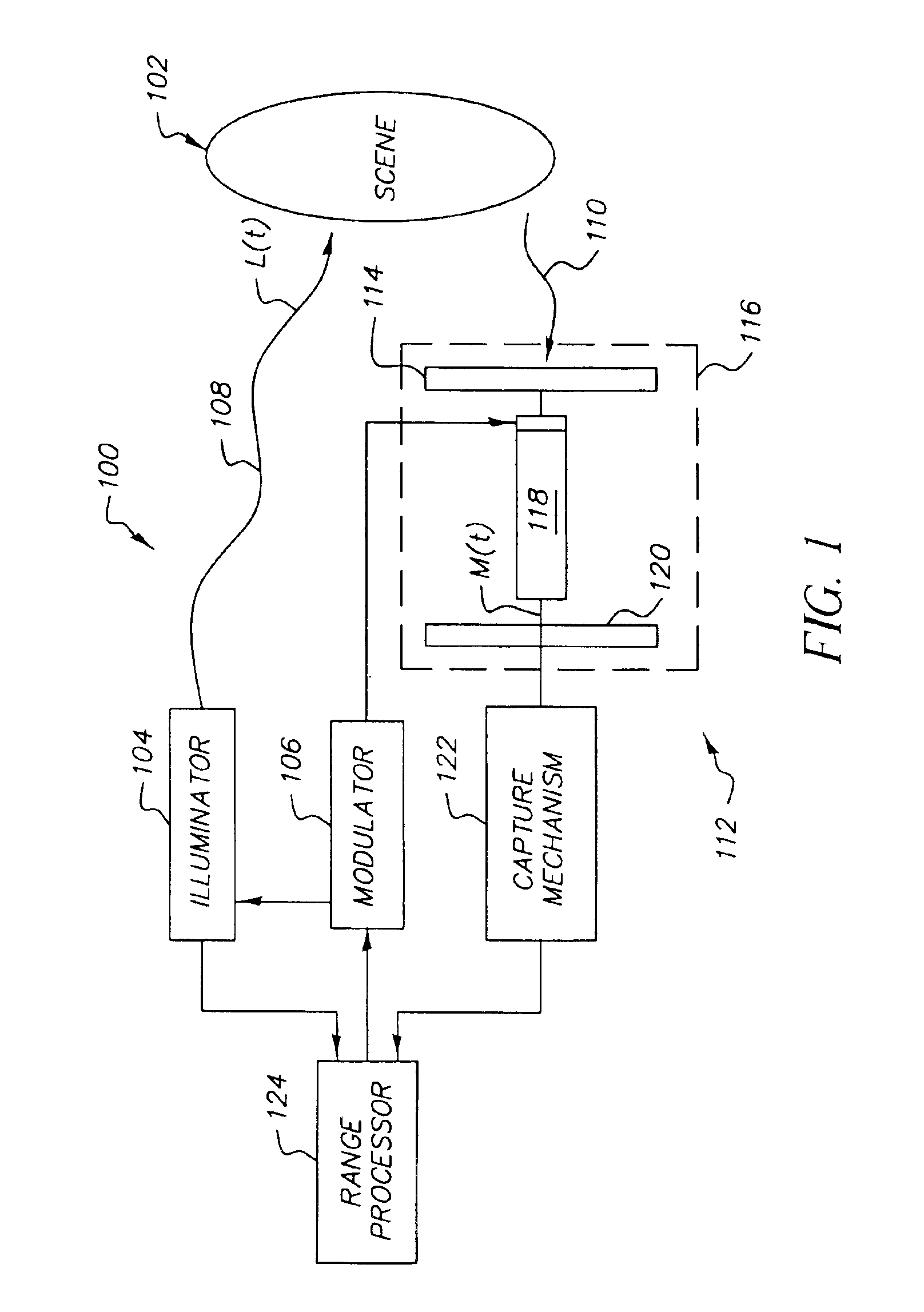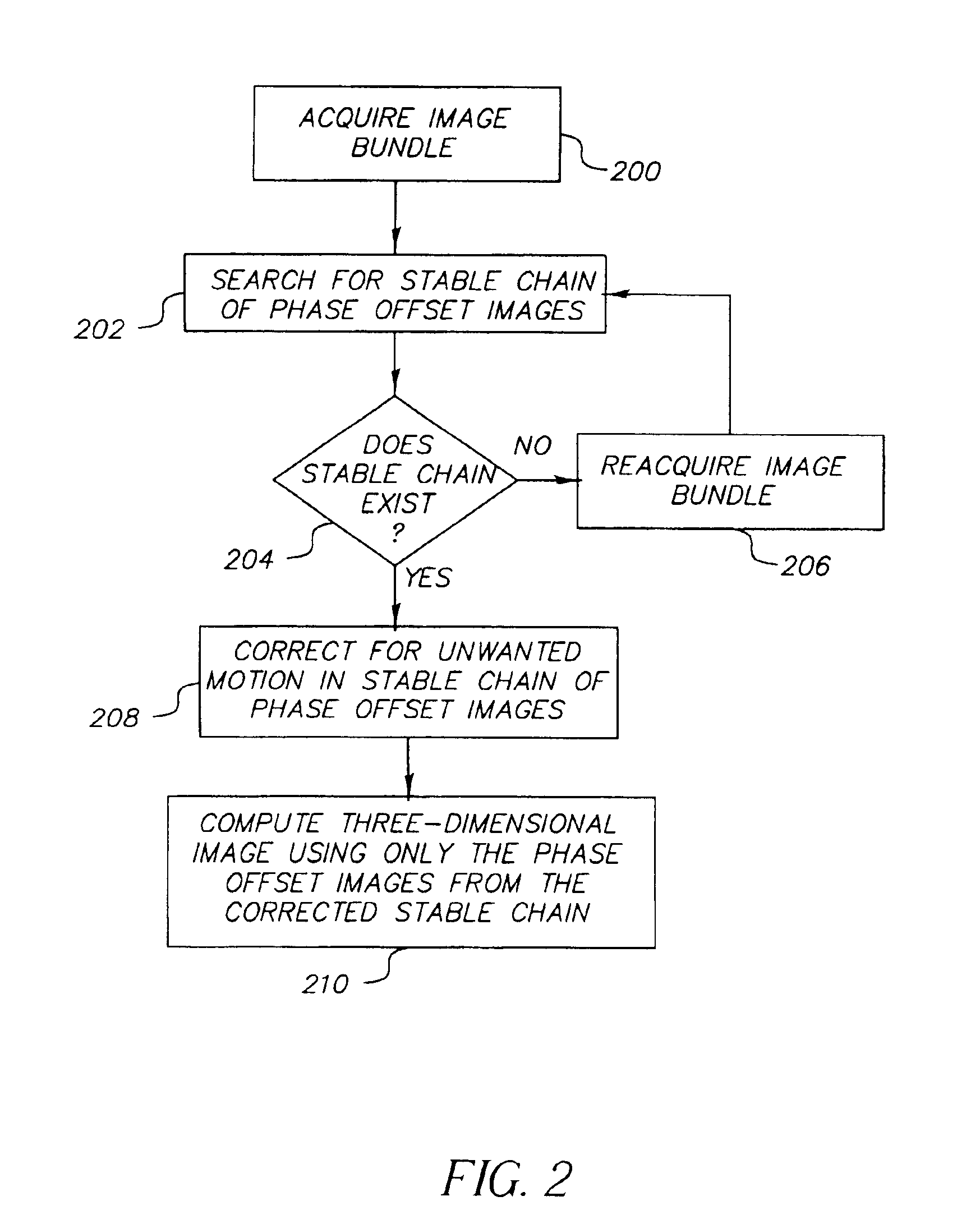Stabilization of three-dimensional images in a scannerless range imaging system
a scannerless range and imaging system technology, applied in the field of digital image processing, can solve the problems of complex systems, high cost, and inability to accurately form three-dimensional images, and achieve the effect of tolerant at least a small degree of global movemen
- Summary
- Abstract
- Description
- Claims
- Application Information
AI Technical Summary
Benefits of technology
Problems solved by technology
Method used
Image
Examples
Embodiment Construction
[0018]Because range imaging devices employing laser illuminators and capture devices (including image intensifiers and electronic sensors) are well known, the present description will be directed in particular to elements forming part of, or cooperating more directly with, a method and / or system in accordance with the present invention. Elements not specifically shown or described herein may be selected from those known in the art. Certain aspects of the embodiments to be described may be provided in software. Given the system as shown and described according to the invention in the following materials, software not specifically shown, described or suggested herein that is useful for implementation of the invention is conventional and within the ordinary skill in such arts.
[0019]It is helpful to review the principles and techniques involved in scannerless range imaging. Accordingly, referring to FIG. 1 (prior art), an SRI camera 100 is shown as a laser radar that is used to illumina...
PUM
 Login to View More
Login to View More Abstract
Description
Claims
Application Information
 Login to View More
Login to View More - R&D
- Intellectual Property
- Life Sciences
- Materials
- Tech Scout
- Unparalleled Data Quality
- Higher Quality Content
- 60% Fewer Hallucinations
Browse by: Latest US Patents, China's latest patents, Technical Efficacy Thesaurus, Application Domain, Technology Topic, Popular Technical Reports.
© 2025 PatSnap. All rights reserved.Legal|Privacy policy|Modern Slavery Act Transparency Statement|Sitemap|About US| Contact US: help@patsnap.com



